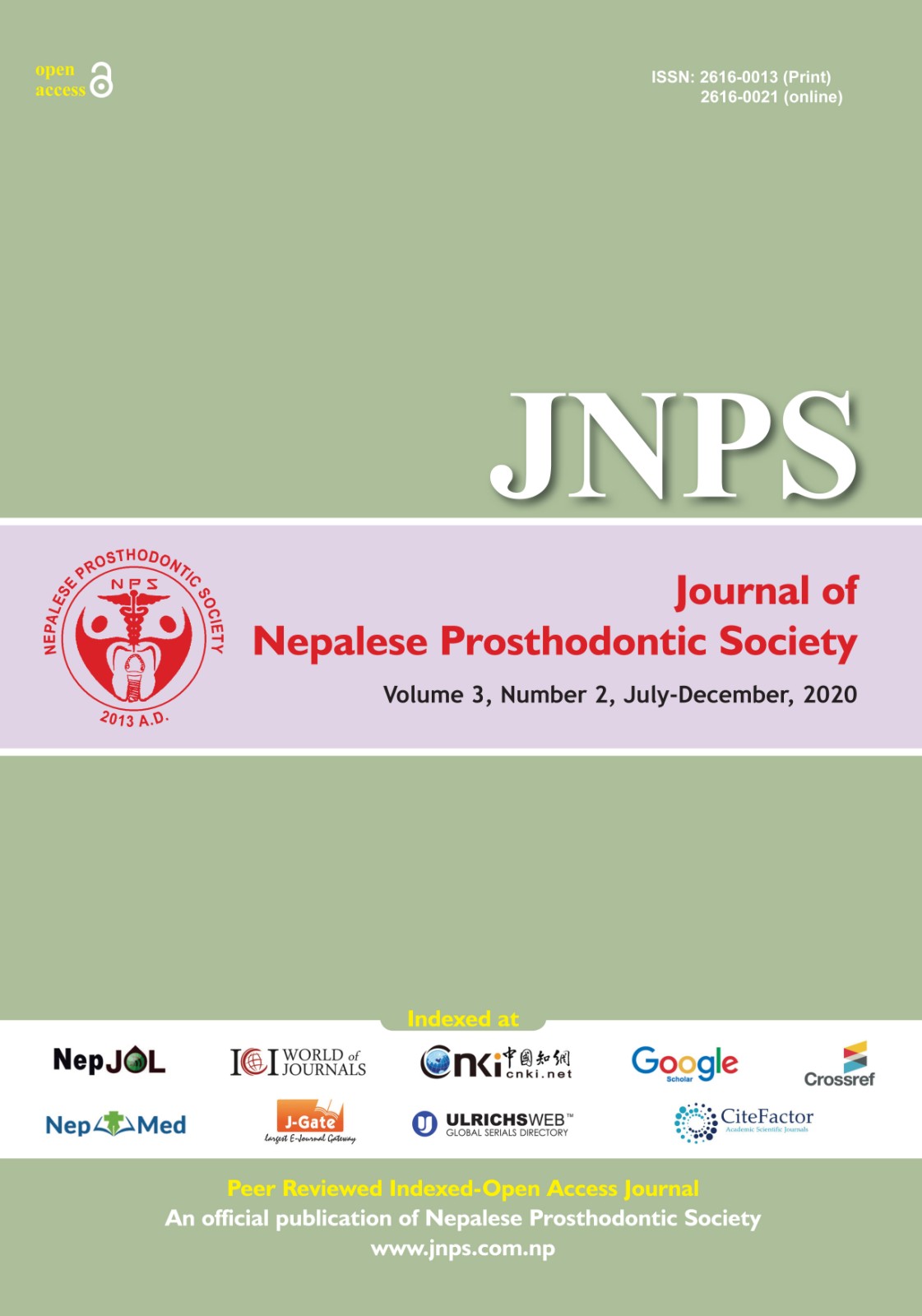The use of posts in endodontically treated teeth among Nepalese Prosthodontists.
DOI:
https://doi.org/10.3126/jnprossoc.v3i2.36376Keywords:
Nepalese prosthodontists;, Endodontically treated tooth;, Post;, QuestionnaireAbstract
Introduction: One of the most studied and researched subjects in dentistry is the restoration of endodontically treated teeth. The success of an endodontically treated tooth depends not only good endodontic therapy but is equally if not more dependent on the nature, type, and execution of post-endodontic restorations. The purpose of this study was to know the opinions, techniques, and materials used by Nepalese Prosthodontists for restoring endodontically treated teeth with a post.
Materials and Methods: A nationwide survey was performed among Nepalese Prosthodontists through electronic communication media by distributing a questionnaire to find out the various treatment strategies, post types, and materials being used by them. Descriptive statistics were used to analyze the responses given by the Prosthodontists by using SPSS statistical software package (version 21.0).
Results: A total of 69 returned questionnaires out of the 114 sent were included in the study. The majority of the respondents were in the age group of 31-40 yrs (70.6%, N=48). 51% of the respondents were male and 49% were female. Out of the responses analyzed, 91% (N=63) think that the primary purpose of a post is to retain a core. The quantity of remaining tooth structure affects the decision to place a post (98.5%, N=68). The ideal post length for 81.2% (N=56) respondents was 2/3rd the root length. 55% (N=38) of respondents think that 4-5mm of apical Gutta Percha should be left during post space preparation. The preferred type of post was custom cast metal post for 69.5 % (N=48) and prefabricated fiber-reinforced post for 66.6% (N=46).55% (N=38) of respondents preferred the passive type of post. Out of the respondents, 72% (N=50) were using Glass Ionomer Cement for cementing cast posts and 91% (N=63) of them were using resin cement for fiber-reinforced posts. The most popular core build-up material was dual-cured composite resin (63.8%, N=44).
Conclusion: Although the results obtained cannot give a definitive guide for restoration of endodontically treated teeth with a post, it pictures how the Nepalese Prosthodontists are practicing posts for restoring endodontically treated teeth. The varied responses obtained here can be taken into consideration to conclude that the preference of techniques and materials depends upon the individual clinician and the clinical scenario.
Downloads
Downloads
Published
How to Cite
Issue
Section
License
This license enables reusers to distribute, remix, adapt, and build upon the material in any medium or format, so long as attribution is given to the creator. The license allows for commercial use. © The authors




